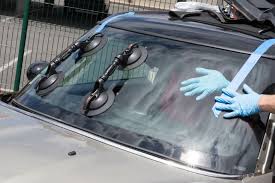Moving a car across state lines requires careful planning. Whether you are relocating, buying a vehicle from another state, or sending a car to family, selecting the right transport method is crucial. Costs, timing, and logistics can vary significantly. Here’s a straightforward guide to efficiently shipping a car across the U.S.
1. Choose the Right Transport Method
Car transport options depend on your budget, timing, and the protection you need for the vehicle.
- Open Carrier: This is the most common and affordable option. Vehicles travel on an open trailer with others.
- Enclosed Carrier: A more expensive but safer choice, this method protects cars from weather and road debris, making it ideal for luxury or classic vehicles.
- Driveaway Services: A professional driver delivers the car by driving it themselves. This method can be faster, but it adds mileage to the vehicle.
- Self-Drive: If time allows, a road trip can be a cost-effective option. Alternatively, you can rent a tow trailer for short distances.
2. Get Multiple Quotes
Comparing prices helps you secure the best deal. Many transport companies provide free online quotes. Prices can fluctuate based on distance, the time of year, and the size of the vehicle, with peak seasons, such as summer, typically being more expensive.
3. Research Auto Transport Companies
Not all transporters are the same. Checking company credentials can help prevent scams and poor service. Look for:
- FMCSA Registration: Legitimate transporters must be registered with the Federal Motor Carrier Safety Administration.
- Customer Reviews: Websites like the Better Business Bureau and Trustpilot provide valuable insights.
- Insurance Coverage: Ensure the company’s policy covers any potential damage during transit.
4. Prepare the Car for Shipping
Proper preparation can prevent damage and delays:
- Wash the Vehicle: Cleaning the car helps expose any existing dents and scratches, making inspections easier.
- Document Its Condition: Take photos of all sides of the vehicle as proof in case of damage.
- Remove Personal Items: Transport companies do not insure personal belongings left inside the car.
- Check for Leaks: Any leaks could be a safety issue and may prevent transport.
- Leave Only a Quarter Tank of Gas: This reduces the vehicle’s weight without impacting the loading and unloading process.
5. Understand Pickup and Delivery Options
There are two main options for pickup and delivery:
- Door-to-Door: The car is picked up and delivered as close to the specified addresses as possible. Some locations may have restrictions that limit this option.
- Terminal-to-Terminal: The vehicle is dropped off and picked up at a designated storage facility. This method is generally cheaper but may require additional travel on your part.
6. Track the Shipment and Receive the Car
Most transporters offer tracking updates. When the car arrives:
- Inspect the Vehicle: Check for any damage before signing the Bill of Lading.
- Compare with Initial Photos: If you find new damage, document it on the paperwork and contact the company immediately.
Shipping a car across state lines can be a straightforward process with the right steps. Effective planning is essential for a smooth experience. How to ship a car comes down to choosing the right method, working with reputable transporters, and preparing the vehicle properly.




